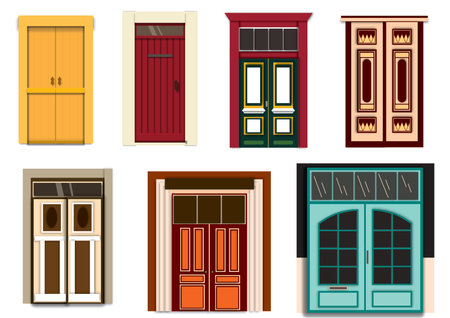Understanding Vastu Shastra and Its Importance in Indian Homes
Vastu Shastra, often referred to as the science of architecture, is an ancient Indian system that guides the design and layout of buildings to harmonise with natural forces. Rooted deeply in Indian tradition, Vastu Shastra traces its origins back thousands of years and continues to influence how homes are constructed and arranged across the country. In India, Vastu is not merely a set of structural guidelines; it is intertwined with spiritual beliefs and daily practices, shaping the way families perceive their living spaces. The principles of Vastu Shastra focus on optimising the flow of positive energy (prana) throughout a home, with particular emphasis on elements like sunlight, wind direction, and the placement of main entrances. By aligning homes according to these ancient tenets, Indians believe it is possible to promote harmony, prosperity, and above all, good mental health for all residents. Today, Vastu-compliant homes are sought after not just for their cultural resonance but also for their reputed benefits in reducing stress and fostering overall well-being in a fast-paced modern environment.
2. Main Door Placement as per Vastu for Positive Energy
In Indian homes, the main entrance, often referred to as the Simhadwar or Pravesh Dwar, plays a pivotal role in determining the overall flow of energy within the house. According to Vastu Shastra, the ancient Indian science of architecture and placement, the direction and position of the main door are directly linked to mental well-being, peace, and prosperity. Proper alignment ensures that positive energies, or Prana, enter the home, thereby promoting a harmonious environment for all family members.
Ideal Directions for Main Entrance
The following table summarises the recommended directions for main doors as per Vastu Shastra along with their typical impact on mental health and prosperity:
| Main Door Direction (Vastu Terminology) | Indian Name | Impact on Mental Health & Prosperity |
|---|---|---|
| North-East | Ishan Kona | Invites maximum positive energy; enhances calmness and clarity of mind; brings prosperity |
| East | Poorva Disha | Symbolises growth and new beginnings; supports mental peace and intellectual development |
| North | Uttar Disha | Attracts wealth and happiness; creates a balanced and stress-free environment |
| West/South-West/North-West/South-East/South | Pashchim/Dakshin-Pashchim/Vayavya/Agneya/Dakshin Disha | Not recommended for main door placement as they may lead to restlessness, anxiety, or financial instability if not corrected with Vastu remedies |
Key Considerations for Main Door Placement in Indian Homes:
- Avoid placing the main door directly facing another home’s door (known as ‘Dwaar Samyam’), as it may cause energy conflicts.
- The main entrance should always open inwards to allow positive energy (Shubh Urja) to flow inside.
- A clean and clutter-free approach to the door, known as Swachhata, is essential for attracting good vibrations.
- Main doors should not be placed near toilets or directly facing a staircase to prevent negative energy from entering (Dosh Nivaran).
- Auspicious symbols such as Om, Swastik, or Shubh Labh can be used on or around the main door to enhance positivity.
Cultural Note:
In many Indian households, rituals like Griha Pravesh (housewarming) are performed before using a new entrance. This is believed to cleanse any negative energy and ensure long-term mental peace and prosperity for the residents. Aligning your homes main door according to Vastu is therefore considered one of the most important steps in creating a supportive living environment in India.

3. Choosing the Right Direction for the Entire Home
When it comes to ensuring holistic well-being through Vastu, selecting the correct direction for your entire home is just as vital as aligning the main door. According to traditional Indian wisdom, especially in both urban apartments and rural independent houses, the direction that your house faces can significantly influence the mental peace and harmony of its residents. Most Vastu experts recommend orienting homes towards the East or North directions. In Indian culture, East is associated with the rising Sun, symbolizing new beginnings and positive energy, while North represents prosperity and clarity of mind.
For families residing in bustling Indian cities like Mumbai, Delhi, or Bangalore, plot limitations often restrict directional choices. In such scenarios, it is advisable to ensure that maximum windows and balconies are in the North or East directions to invite natural light and fresh air. For rural homes with more flexibility, orienting the house with a broad frontage facing East or North is considered highly auspicious. This not only aligns with Vastu principles but also supports traditional Indian lifestyles where morning rituals and prayers are performed facing these directions.
It’s crucial to avoid South-West facing homes whenever possible as this direction is believed to bring stress and instability according to Vastu Shastra. If you already own a South or West facing property—a common situation in congested urban setups—certain remedies like using specific colours, mirrors, or Vastu pyramids can help balance energies. Consulting a local Vastu consultant who understands regional climatic conditions and typical housing layouts in India can be immensely beneficial.
Regardless of your location—be it an apartment in Hyderabad or a standalone home in a Tamil Nadu village—the goal should be to create an environment that supports mental clarity and emotional calmness. Prioritising proper ventilation, uncluttered spaces near the North-East corner (called Ishanya), and using locally sourced natural materials in construction further enhances positive vibrations as per Indian Vastu traditions.
4. Vastu Tips for Enhancing Mental Health Through Home Design
According to Vastu Shastra, the design and arrangement of one’s home can have a profound impact on mental well-being. In India, incorporating specific colours, symbols, and arrangements aligned with Vastu principles is a traditional way to foster positive energy and support good mental health. Below are practical recommendations that blend local customs with Vastu guidance:
Colours That Support Mental Health as per Vastu
Colour selection in Indian homes is deeply influenced by both cultural preferences and Vastu guidelines. The table below outlines recommended colours for key areas to promote peace and calmness:
| Area | Recommended Colour | Vastu Rationale |
|---|---|---|
| Main Door | Brown, Green | Symbolises stability and growth; invites positive energy |
| Living Room | Light Yellow, Beige, White | Encourages openness, clarity, and harmony among family members |
| Bedroom (East/North) | Light Blue, Lavender | Calms the mind; promotes restful sleep |
Symbols and Decorative Elements in Indian Homes
- Swastika or Om Symbols: Placing these near the main entrance is common in Indian culture. They are believed to guard against negativity and bring mental peace.
- Tulsi Plant: Keeping a Tulsi (Holy Basil) plant in the North or East direction purifies the environment and supports emotional balance.
Arrangement Tips Based on Vastu for Mental Wellness
- Avoid clutter near the main door to allow free flow of positive energy into the house.
- The main entrance should open inwards and be well-lit; this symbolises welcoming opportunities and positivity.
- Beds should not be placed under beams or directly opposite mirrors, as these arrangements may disturb sleep and increase anxiety.
Additional Practical Suggestions:
- Use natural materials like wood or cotton for furniture and furnishings to keep the indoor environment soothing.
- Avoid placing electronic devices close to resting areas to minimise disturbances.
By thoughtfully applying these Vastu tips—rooted in Indian tradition—you can create a home environment that nurtures peace of mind, emotional stability, and overall well-being for every member of the household.
5. Common Vastu Doshas (Flaws) Related to Door and Home Orientation
Typical Vastu Defects in Indian Homes
Despite careful planning, many Indian homes inadvertently develop Vastu doshas (flaws), especially concerning the main door and overall house orientation. The most frequent issues include the main entrance facing the South or South-West, which is believed to invite negative energies, and houses where the main door aligns directly with a back door, causing positive energy to flow out rapidly. Other common flaws are irregular shapes of plots or homes, obstructed entranceways, and toilets or kitchens placed in the North-East, disrupting the flow of beneficial energies as per traditional Vastu principles.
Cultural Implications of Vastu Doshas
Within Indian society, these Vastu doshas are not just architectural concerns but have deep cultural significance. Families often associate persistent health problems, mental unrest, or financial struggles with such defects. There is a widespread belief that an incorrect door direction can disturb not only prosperity but also peace of mind and familial harmony. This understanding is woven into everyday conversations and even influences property valuations and marital alliances in many communities.
Simple Remedies for Rectifying Doshas
Addressing these flaws does not always require structural changes—many culturally-accepted remedies provide practical alternatives. For example, if the main door faces an inauspicious direction, placing a Swastika symbol or a toran (decorative hanging) above the entrance is considered effective. Using metal strips on doors opening towards wrong directions or placing holy symbols like Om or images of deities at strategic locations can mitigate negative effects. For houses with North-East toilets or kitchens, keeping them clean and using sea salt for mopping is commonly recommended. These remedies are deeply rooted in Indian culture and offer psychological comfort while gradually aligning the space with Vastu tenets for improved mental well-being.
Community Practices: Faith Meets Functionality
Many households consult local Vastu experts or family elders for advice before implementing any remedy, emphasizing collective wisdom over individual action. Observing festivals like Griha Pravesh (housewarming) with proper rituals further neutralizes lingering doshas and infuses positivity into the home environment. Through these culturally resonant practices, Indian families strive to maintain harmony between their living spaces and mental health as prescribed by ancient Vastu Shastra.
6. Popular Myths and Clarifications around Vastu Directions
Common Misconceptions about Vastu in Indian Homes
Vastu Shastra, while deeply rooted in Indian culture, is often surrounded by several myths that influence how homeowners design their main doors and overall home directions. One prevalent misconception is that only one specific direction—usually the north or east—is universally auspicious for all main entrances. However, this oversimplification ignores individual plot orientations, family requirements, and regional nuances across India.
Myth 1: North or East Facing Doors Are Always Best
This belief persists widely, but Vastu experts clarify that the ideal direction for a main door depends on the house’s layout, location, and the owners birth details. While north and east are generally favorable due to sunlight and energy flow, homes with other orientations can also be harmonious if designed thoughtfully according to Vastu principles.
Myth 2: Any Deviation from Vastu Brings Bad Luck
Another common myth is that any deviation from strict Vastu guidelines will immediately result in negative outcomes or mental health problems. Experts stress that Vastu should be viewed as a set of recommendations rather than rigid rules. Small adjustments and remedies—such as using symbols, colors, or mirrors—can help mitigate minor Vastu doshas (flaws), supporting a peaceful environment without drastic renovations.
Myth 3: All Vastu Remedies Are Expensive
There is a misconception that correcting Vastu issues requires extensive structural changes or costly rituals. In reality, many effective solutions are simple and affordable, such as rearranging furniture, placing plants near the entrance, or ensuring proper lighting at the main door. Expert advice focuses on practical steps tailored to each households needs and budget.
Expert Clarifications for Informed Homeowners
To make well-informed decisions about main door placement and home direction, it is important to consult certified Vastu consultants who understand both traditional wisdom and modern living requirements. These experts can analyse your property’s unique characteristics and recommend personalized strategies to promote good mental health, positive energy flow, and overall well-being for your family.
The Takeaway
By distinguishing between myths and facts about Vastu directions for main doors and homes in India, homeowners can create spaces that not only respect cultural values but also foster holistic mental wellness. An open-minded yet analytical approach ensures that tradition complements contemporary lifestyles harmoniously.
